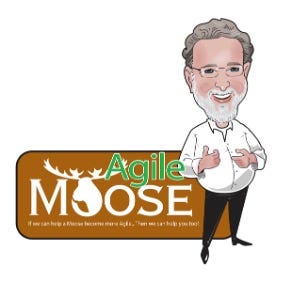The Resurgence of the Agile Project Manager
A BROADER Role
In the early days of “agile”, I thought traditional Project Management roles were not long for the world. This is circa the early 2000s
In the early days, I felt part of my job was to “convert” PMs to be agilified.
From the early days until not that long ago, I felt the term Agile Project Manager was an oxymoron, even though many referred to themselves as such.
But have you noticed…
The Project Management role hasn’t gone away. It’s still well understood, trusted, and valuable to organizational leaders.
The Agile roles have been largely disrupted, which isn’t necessarily unexpected.
We’re in a new era of agility…
This has caused me to begin reshaping my thoughts about traditional Project Management and Agile. Let’s go a bit further.
Agile 2025
After I attended the 2025 Agile Conference, the first one after the Alliance and PMI merger, I changed my older and more recent thinking. Collecting some of my impressions from the Agile Conference—
PMI had a strong presence at the conference, both from a booth and marketing perspective, and also in the mix of attendees. For example, I found it interesting that there were 1-2 traditional PMs at my tables during meals.
I was interviewed on two separate occasions at the conference. One was by Dave Pryer for The Agile Network, and the other was by Judy Neher and Lonnie Weaver-Johnson. In both interviews, we discussed two things of note for this article—
Value
PM mindset + Agile mindset
And the two are intertwined.
That is, we agilists never clearly articulated and demonstrated our value proposition to the business, our stakeholders, and our clients. We tried to put it into “Agile terms” that were never truly understood or resonated with the folks who mattered. Chris Stone is pounding this drum right now, as am I, but we’re only scratching the surface of inspiring clear value recognition.
The second thing is mindset. That is, I think we took the whole “agile mindset” thing too far. We became too agile, soft, fuzzy, and team-focused, and lost our connection to value delivery and results mattering. I’ve never met a Project Manager who wasn’t focused on the latter. So, I’m beginning to think that a balanced mindset is the answer. One that is right-balanced between agile principles and practices and Project Management practices, with a laser focus on delivery. Call it the Agile+PM mindset if you will.
A Hope
We need to become less role-focused and more skill-focused.
My hope is for a singular role (and new mindset) of Agile Project Manager (guide, delivery agent, leader) to emerge that is—
Part Scrum Master
Part Organizational Coach
Part Project Manager
Part Functional Manager
Part Product Owner
Part Product Manager
Delivery Manager
RTE
That we begin a reimagination of their roles into a singular, clear, well-understood, compelling, and valuable role.
One thing this will do is provide clarity of our mission and values for our stakeholders. It will also strengthen and widen the impact, fighting against the stereotyping, narrowness, and confusion across the many current roles (SM, PO, DM, RTE, etc).
It will also clarify our focus on key outcomes, including—
Getting shit done (delivery).
Maintaining the health of the team(s) (resilience).
Aligning and confirming customer value (ROI).
Sense AND Respond
There are three prerequisites to making this idea emerge successfully—
First, the Agile Project Manager needs to be staffed with deeply skilled individuals. Do they need to know everything? Of course not. But they need to have deep and broad areas of specialty that they can bring to bear in their roles to provide obvious value.
To be clear, you can just be a “coach” or a “project manager” in this role. Think of the Agile Coaching Growth Wheel as a model for the competencies you need.
Second, the individuals staffing the role can’t be focused on the role or title. Instead, they need to be laser-focused on value delivery. Helping or coercing a group to be “agile” is not part of the equation, nor is being bounded by the definition of a Scrum Master as defined by the Scrum Guide.
You need to have a broader view of yourself, your responsibilities, ownership, and the activation of your role. You also need to continuously grow your skills.
Finally, you need the awareness to sense and respond to situations, to quickly determine which experience and skills you need to bring to bear, and to take charge of solving a problem.
Wrapping Up
At the conference, I spoke about the need for a melding of Project Management and Agile mindsets. Think of it as more prescriptive and less prescriptive. I used the terms hard and soft in this post.
While there were many reactions to those terms, I think the point is correct. As agilists, we’ve been operating too softly. Most of the traditional project managers I meet are a bit too hard.
I’m incredibly hopeful we can learn from each other and meet in the middle. Or slightly closer to the PM side of the equation.
We’ve both been out of balance for far too long. Here’s to rebalancing to meet the larger challenges ahead.
Stay agile, my friends,
Bob.
To follow up on the idea in this article, I think Patty Aluskewicz’s post supports it quite nicely.
Whatever your role or experience, life in the agile space can be challenging today. Having someone to serve as your coach, as a sounding board, be a truthteller, and become a trusted partner on tap to leverage during those tricky bits can be helpful. That’s precisely where Agile Moose can help you.
We’re not just an Agile Coach, but a business domain expert, a personal advisor, an organizational design and development consultant, and a leadership coach and partner.
The moose brings over 35 years of technical and product leadership experience across various contexts. If you’re stuck and know it, reach out, as I can help.




I would add the dimensions of time (back then and now) and development of the people (linked to time, but not a strict relationship):
There are some things that were true in 2001 but might not have aged well: The original agilists had the technical experience, the project management skills, the solid understanding of how to design systems for the long run. If you do not have that, you build agile sandcastles.
What if most of the agilists pitfalls of today were actually overdoings of original solutions? E.g. "not planning ahead enough" originally was defying year-long plans with no flexibility, "believing too much in iterations" came from "all in once" large feature sets, "ignoring politics" was meant to get politics out of discussions that were technical in nature. And similarly, being "too soft" was the answer to treating human beings as replaceable resources.
This is not all. Whenever something becomes popular and successful, the bandwagon effect kicks in, watering it down. Business consultants from "the usual suspects" of consulting companies and personal/career coaches without experience on the ground floor lack the solid background - not "hard" enough, if you will.
(Reusing and building on <a href="https://thelaterallens.substack.com/p/why-agile-is-losing-steam/comment/88514450">a comment</a> that I left under the article "<a href="https://thelaterallens.substack.com/p/why-agile-is-losing-steam">Why Agile Is Losing Steam</a>" earlier this year.)